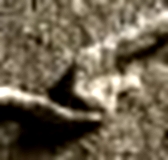(from Mc Leod's "Composite bows from the tomb of Tut.ankam.um", see below)
- links to photographs, with some details,
- links (and a few comments) to some papers of interest.
Corrections 2021 : the british museum's web site seems to work differently now... so, copy the number into the search field in https://www.britishmuseum.org/collection
Addition, 2021/12/02 : 2 videos focused on reliefs with Neo-Assyrian bows; (more precision than found in the museum's photos)
~860 BC, Ashurnasirpal II, Nimrud, North West Palace :
B.M. N° 124566
B.M. N° 124567
B.M. N° 124569
B.M. N° 124534
B.M. N° 124536
B.M. N° 124544
B.M. N° 124579
~730 BC, Tiglath-Pileser III, Nimrud, Central Palace :
B.M. N° 118899
... focus on the bow tip :
more precise, from https://youtu.be/MPAOa57bS-k?t=53 :
B.M. N° 118903
~700 BC, Sennacherib, Nineveh, South West Palace :
B.M. N° 124951
proportions of the bow (length, band)
vs. proportions of the archer's body
vs. proportions of the archer's body
~640 BC, Ashurbanipal, Nineveh, North Palace :
B.M. N° 124852
B.M. N° 124884
... bow tips ...
better, from https://youtu.be/MPAOa57bS-k?t=182
... angular ...
B.M. N° 124884 (another picture)
... setting the string on one ear ...
better, from https://youtu.be/MPAOa57bS-k?t=145
B.M. N° 124876
draw hand
a bit better, from https://youtu.be/0L8ct0am72c?t=234
bow hand
bow ear
B.M. N° 124872
bow tips
(high)
better, from https://youtu.be/MPAOa57bS-k?t=280
(low)
Interesting Papers
The representation of the bow in the art of Egypt and ancient Near East, R.H.Wilkinson, 1991
http://www.jtsa.edu/Documents/pagedocs/JANES/1991%2020/Wilkinson20.pdf
Interesting remark about the "heroic overdraw" that would be mere propaganda about king's strength. Seems doubtful to me... as we can see, every kind of archers (not only kings) and even enemies, are depicted using this stance. [ see for instance relief n° 124536 (B.M. number) ]. Also, other works on angular composite bows found in Egypt (see below : Balfour's paper) let think that the Assyrian angular bow was a composite bow. We know that this kind of bow can be made short (ex. the traditional Korean bow used nowadays), efficient and designed to be drawn past the ear, at least by people whose arms are not too long [ see traditional Korean, Chinese, Mongolian bows and techniques ; Turkish composite traditional bow is used with a shorter draw ].
Experimental Approaches to Ancient Near Eastern archery, R.Miller, R.McEwen, C.Bergman, 1985 ?
http://experimentalarchaeology.files.wordpress.com/2011/06/barton-experimental-approaches-to-near-eastern-archery.pdf
On drawing the bow, Shelly Waschmann, 2009
http://anthropologyworldnews.tamu.edu/faculty/wachsmann/publications/Wachsmann-2009-4138-On-Drawing-the-Bow.pdf
On a remarkable ancient bow and arrows believed to be of Assyrian origin, H. Balfour, 1897
http://www.lc-modellbau.at/Bogenbau/Assyrisch/Balfour%20-%20On%20a%20Remarkable%20Ancient%20Bow%20and%20Arrows%20Believed%20to.pdf
Composite bows from the tomb of Tutankhamum [tut.ankam.um], Wallace McLeod, 1970
http://www.scribd.com/doc/92469049/McLeod-Wallace-compositeBowsFromTheTombOfTutankhamun [ book removed : copyright... ]
http://issuu.com/martevader/docs/mcleod.wallace.composite.bows.from. [less easy to read, low quality images]
We see that the composite angular bow length is here generally around 1m20, but N° 2 and n°4 are above 1m32.
The Bow in the Ancient Near East, a reevalutation of archery from the late 2nd millenium to the end of the achaemnid empire, C. Zutterman, 2003
Found no free version online. Can be bought for €14,00 EUR from Peeters Publishers' web site.
Contains no photos of original artifacts, but (at the end) a few simplified drawings taken from various publications. More interesting : several synthetic tables. Examples...
from observation in museums (B.M. & Louvre)
and from pictures found in a number of publications
and from pictures found in a number of publications
Can we really say anything clear about
the Assyrian release from the depictions on the reliefs ?
the Assyrian release from the depictions on the reliefs ?
Observations about NW-Iran
are based on a mere dozen illustrations...
are based on a mere dozen illustrations...
Fig. 8 : first part
http://www.academia.edu/1506557/The_Representations_of_Foreign_Soldiers_and_Their_Employment_in_the_Assyrian_Army
"Arab Archery" : An Arabic manuscript of about A.D. 1500
"Book on the Excellence of the Bow and Arrow" and the Description thereof.
Translated by N.A. Faris and R.P. Elmer, 1945.
Chapter XV : On the different draws and the manner of locking the thumb and the index finger on the string, and on the rules of arranging the index finger upon the thumb
http://www.archerylibrary.com/books/faris-elmer/arab-archery/docs/xv.html
(found nothing that resembles the draw-hand position in the Assyrian reliefs)









































No comments:
Post a Comment